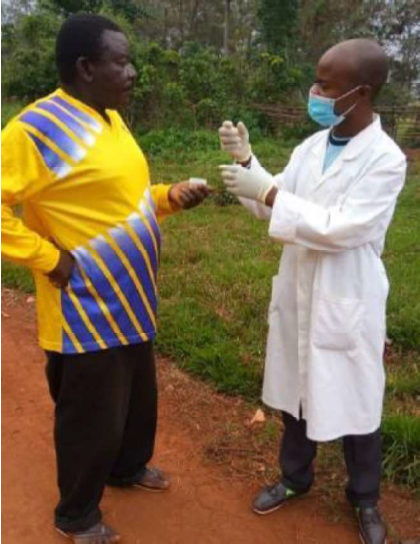- What We Do
- Agriculture and Food Security
- Democracy, Human Rights and Governance
- Economic Growth and Trade
- Education
- Environment and Global Climate Change
- Gender Equality and Women's Empowerment
- Global Health
- Humanitarian Assistance
- Transformation at USAID
- Water and Sanitation
- Working in Crises and Conflict
- U.S. Global Development Lab
Speeches Shim

The Democratic Republic of the Congo is among 30 countries with the highest tuberculosis (TB) burden, including for multidrug-resistant TB (MDR-TB) and HIV-related TB. However, detection rates remain low in provinces such as Lomami.
In early 2020, epidemiological data from the Lomami province showed a notification rate of only 86 per 100,000 people, translating to detection rates of 52.7 percent for TB and 24.4 percent for MDR-TB. These low numbers were expected to create a 53.6 percent shortfall against targets set by USAID’s Integrated Health Program (IHP).
To address this, USAID focused efforts in the province’s Wikong health zone (population 136,934), which had a detection rate of only 23 percent due to insufficient public awareness of services, difficulties identifying the virus under microscopes in laboratories, and failure to comply with National Tuberculosis Control Program directives on diagnosing and treating TB.
Lomami province organized a USAID-funded TB mini-campaign in Wikong in February 2020 to increase case detection. In advance of this, USAID and the provincial health district briefed the health zone management team, nurses, and laboratory technicians in five health centers on diagnosis and treatment and shared information with leaders of community action groups and opinion leaders on TB’s devastating impacts.
The mini-campaign found an initial 40 index cases. After investigating the cases, the team found 93 primary contact subjects (family and household members) and 387 more who had been exposed to TB in the community. USAID IHP referred these 480 people to sites for sample collection and analysis.
In total, the campaign found and helped 20 cases of bacteriologically confirmed TB and three cases of pulmonary TB, increasing Wikong’s detection rate from 23 percent to 62 percent. This contributed to raising the province’s overall monthly detection rate from less than 1.5 percent to more than 60 percent in just four days.
“The mini-campaign is a supplementary and effective intervention to improve TB detection rates,” said Thomas Barakiwa, TB nurse supervisor in Wikong. “This is worth implementing throughout the province, in all health zones that have low detection rates.”

Comment
Make a general inquiry or suggest an improvement.